Iceland. Land of fire and Ice. With its stunning volcanic landscapes, wealth of outdoor activities and forces of nature is an adventurer’s dream. But before you head out to Iceland’s epic landscapes and natural wonders you might be wondering ‘is Reykjavik worth visiting?’
The answer is yes, you’ll find plenty to see and do in Iceland’s capital city. Read on for the best things to do in Reykjavik, Iceland’s capital of cool…
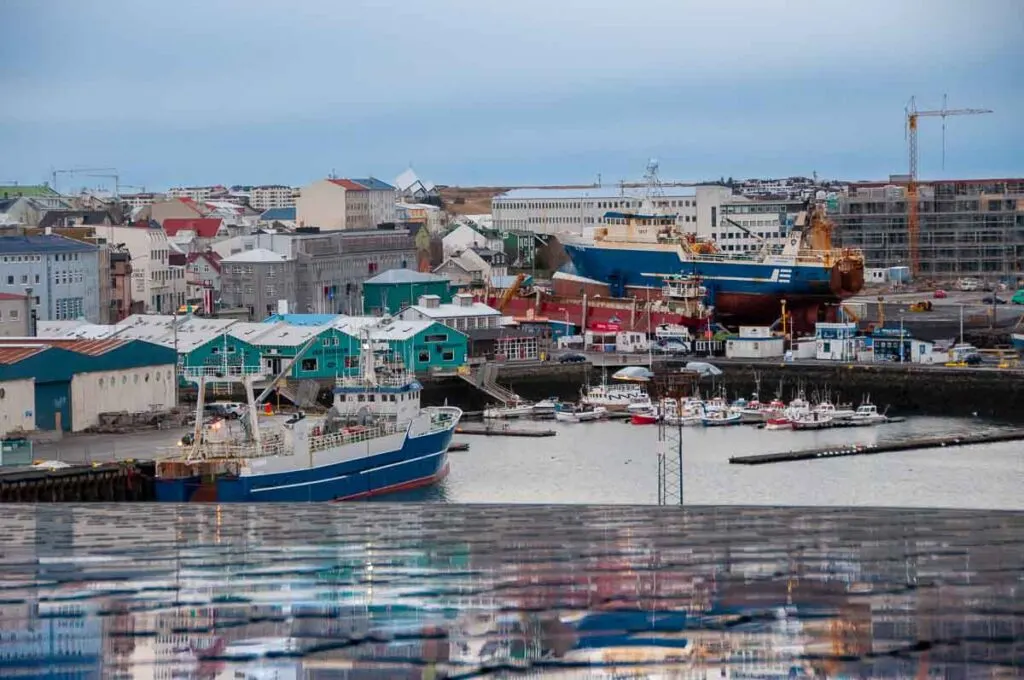
This post may contain affiliate links, which means that we may earn a small commission, at no extra cost to you, for qualifying purchases. More info: disclosure.
Reykjavik, the capital of Iceland
Contents
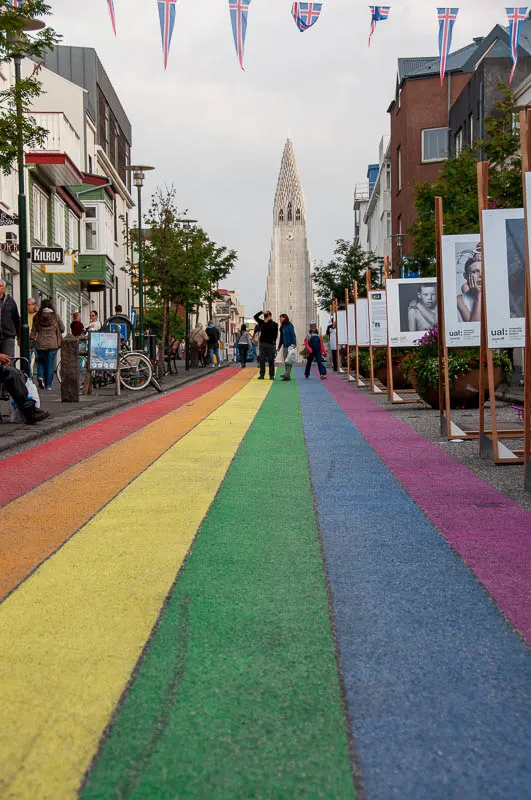
Reykjavik, the capital of Iceland, has a distinct vibe going on. It has a small-town feel; traditionally built wooden houses, shops packed with local design, café culture and amazing Icelandic food. It’s all built around a working harbour but there’s a definite edge and a modern twist.
Reykjavik is an intriguing capital full of creatives, culture, off-the-wall architecture, design, art and, of course, nature’s stunning backdrop over Faxaflói Bay to Mount Esja. There’s wildlife too, with whale-watching trips and Puffin tours.
Most people who visit the Iceland will stay in the capital, Reykjavik, for at least a few days. It’s is the perfect base to explore further afield and there’s a lot to see and do in and around the city. It’s one of the best places to stay in Iceland but what is Reykjavik known for?
Reykjavik is a small city filled with unique architecture and fascinating art, delicious food and quirky shops, brightly coloured buildings and stunning views. So if you’re planning a trip to Iceland, here are some of the top things to do in Reykjavik, the world’s most northern capital city.
What is Reykjavik known for?
Reykjavik is known for it’s landscapes, design and Blue Lagoon. Check out my top Reykjavik highlights.
- Must see: Hallgrímskirkja church, Harpa, Sun Voyager, City Centre, Icelandic design
- Top attractions: Whale watching and puffin tour, Northern Lights
- Must try: Food Tour, Pylsur – Icelandic Hot Dog
- Geothermal Pools: The Blue Lagoon, Sky Lagoon
- Museums: Whales of Iceland, Perlan
- Where to stay: Icelandair Reykjavik Marina Hotel
Reykjavík is compact so it’s easy to walk round and you won’t get cold feet because there’s under-road heating to keep the roads clear of snow. A brisk wind whips across the bay giving the city an air of freshness and energy and the weather seems to change every fifteen minutes.
Wear lots of warm layers and pack a waterproof – hats and gloves are essential in winter.
>>> See my Iceland packing list for tips on what to pack for Iceland.
Witness the Aurora Borealis, the Northern Lights
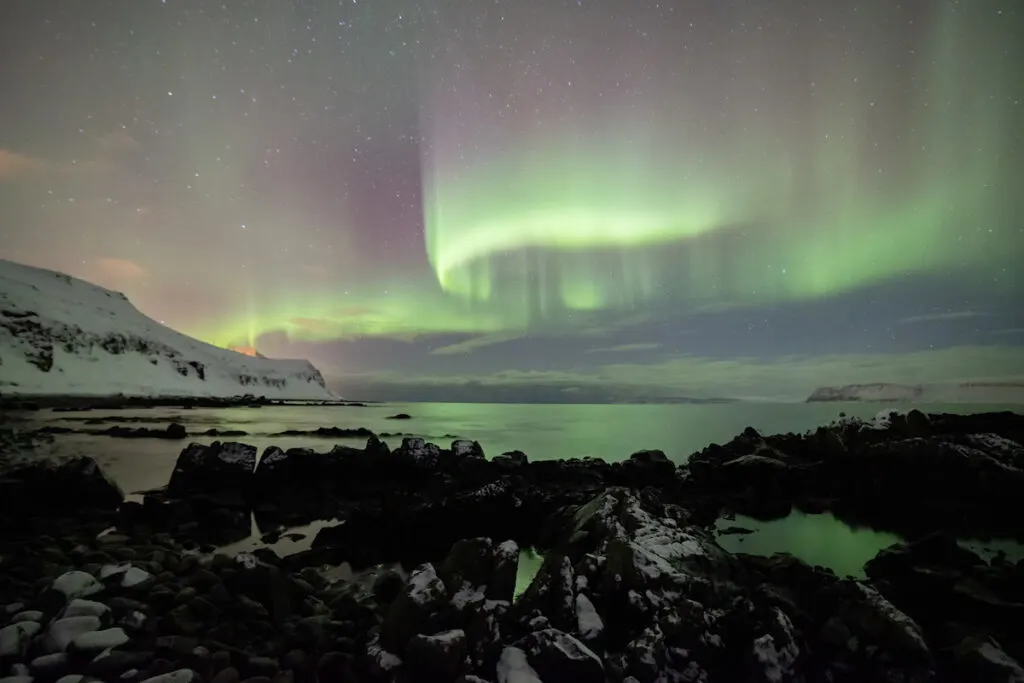
Many people visit Iceland in the hope of catching a glimpse of the phenomenon that is the Northern Lights. Me included.
Plenty of Northern Lights tours set off from Reykjavik so if the Northern Lights are on your wish list you can pick up a tour from the city. However, a sighting of the Aurora Borealis is never guaranteed, it’s all down to luck and weather.
Clear skies give the best chance of seeing the Northern Lights and you’re more likely to catch a display during winter. On each of my visits to Reykjavik the skies were cloudy so if the Lights was were dancing up there in the sky, the spectacle was obscured by clouds.
I’d love to go back and catch sight of those elusive ribbons of coloured light and learn how to photograph the Northern Lights.
If the Aurora Borealis is high on your bucket list you might want to head further north to Norway on a Tromso winter trip where chances are higher that you’ll see them.
Head to Harpa Concert Hall
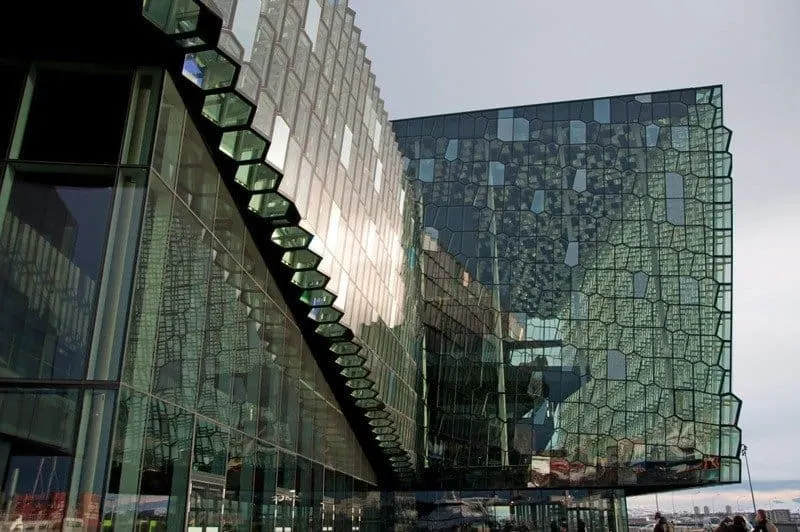
Down by Reykjavik Harbour, you’ll find Harpa Concert Hall, the stunning abstract structure that is home to the Iceland Symphony Orchestra. This should definitely be at the top of everyone’s Reykjavik to-do list.
You’re sure to be amazed by the countless sparkling panes of glass, which reflect Iceland’s pure northern light and echo the dramatic rock formations of the Icelandic landscape.
The viewing platform on Harpa’s upper levels looks out across Reykjavik’s harbour and over to Mount Esja to the north. The views are particularly breathtaking in the late afternoon, just before sunset.
There’s a lot to see at Harpa, so it’s well worth spending a few hours here. Harpa’s beautiful auditorium has outstanding acoustics, and going along to one of the regular shows is an experience in itself. Harpa also doubles up as Reykjavik’s main conference center.
La Primavera restaurant on the 4th floor serves excellent food, or you could visit the Hnoss restaurant and bar on Harpa’s ground floor, near the design store and Listval gallery area.
There’s a lot to see at Harpa and it’s well worth spending an hour or two here.
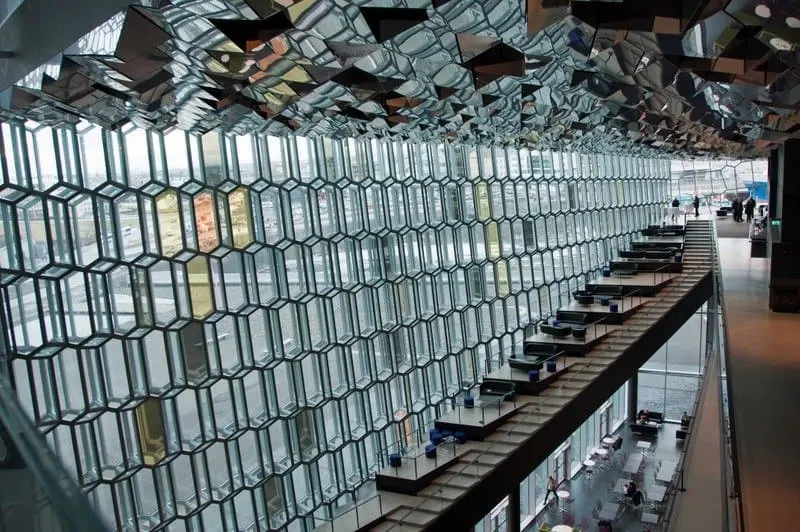
Explore the National Museum of Iceland
Once you’ve seen Iceland’s beautiful landscape, you might be keen to learn a little more about its past. The National Museum is the place to delve into the history and culture of Iceland.
You can explore more than 2,000 artefacts that tell the story of how Iceland came to be, with exhibits covering everything from the Viking era right up to modern-day events.
You’ll also see the Valthjófsstadur, a culturally-significant carved church door from Iceland’s medieval era, along with many of the country’s treasures and traditions
>>> Read more: Exploring Iceland’s Golden Circle
Visit the striking Church of Hallgrímur (Hallgrímskirkja)
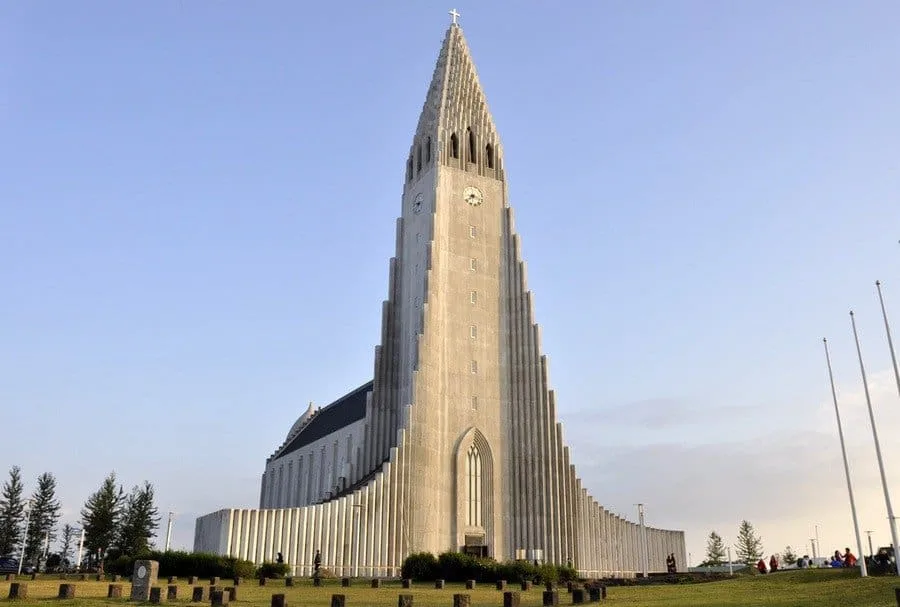
It doesn’t matter which corner you turn in Reykjavik; you’re sure to see the impressive Hallgrímskirkja church at some point in the distance. Head towards it from wherever you are and get up close to appreciate the sheer enormity of this landmark building.
Hallgrimskirkja Church is the city’s most imposing building, and with its basalt spire rising 244 feet into the sky, it’s one of Iceland’s tallest structures. Needless to say, the observation deck at the top of this Lutheran church has some of the best views in Iceland’s capital city, stretching over the rooftops to Faxaflói Bay and Mount Esja. It’s one of the best things to do in Reykjavik.
You can take a lift to the observation deck for around ISK 1000 or ISK 100 for children aged 7-16.
Tip: Go here early in your trip to get your bearings in downtown Reykjavik.
>>> Get good discounts on museum entry and city buses with the Reykjavik Card.
Visit Reykjavik Maritime Museum
Much of Iceland’s history is centred around the maritime industry, so the Reykjavik Maritime Museum is a must-see for any visitor to Iceland’s capital city. As you’d expect, the museum is located in the Old Harbour, in a building that used to be a fish-freezing plant. It shows how modern-day Iceland is grounded in its maritime roots.
The museum’s exhibits showcase early Iceland and how heavily the settlers in the young country relied on fishing. Artefacts and stories will help you imagine the lives of the fishermen and women who built up the vital industry that formed the backbone of the country. And bringing Iceland’s maritime story up to more recent times, you can also explore the Coast Guard Vessel Óðinn, which was used in the Cod Wars of the 20th century.
>>> Book a city highlights tour with a local guide.
See Sun Voyager on Reykjavik’s waterfront
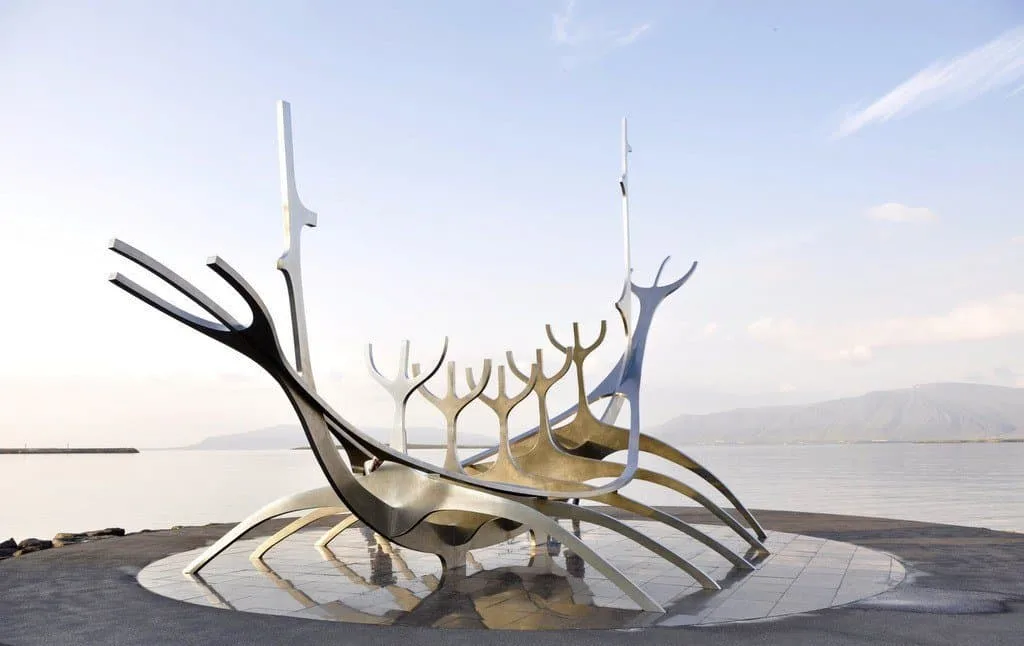
While exploring Reykjavik’s bustling marina and Old Harbour, take a stroll along Reykjavik’s charming waterfront to the beautiful sculpture known as Sun Voyager (Sólfar) by Jon Gunnar Arnason.
Your walk will take you across the bay, past brightly coloured rooftops and views of snow-capped volcanic mountains, to where Sun Voyager sits overlooking the shoreline. On a sunny day, the light glints off the sculpture in a captivating way.
The bay was very tranquil when we visited in August and was incredibly beautiful. A visit to Sun Voyager is one of the best things to do in Reykjavik and sums up Reykjavik perfectly from the vikings, its relationship with the sea to the city’s design, culture and beauty.
>>> Read more: What to wear in Iceland
See the Settlement Exhibition
The Settlement Exhibition is a great way to learn more about Icelandic culture and history. It’s a preserved archaeological site centred around a hall from the Settlement Age, dating back to the 10th century.
Historical artefacts and recreations of early settlers’ possessions are accompanied by interactive digital displays that give you a real sense of Iceland’s early days. You’ll come away from the Settlement Exhibition with a better appreciation of the Viking influences seen around modern-day Reykjavik.
You’ll need to give yourself a couple of hours to explore the Settlement Exhibition properly. You can either sign up for a guided tour or look around the exhibition on your own.
>>> Book a city highlights tour with a local guide.
Go Puffin watching
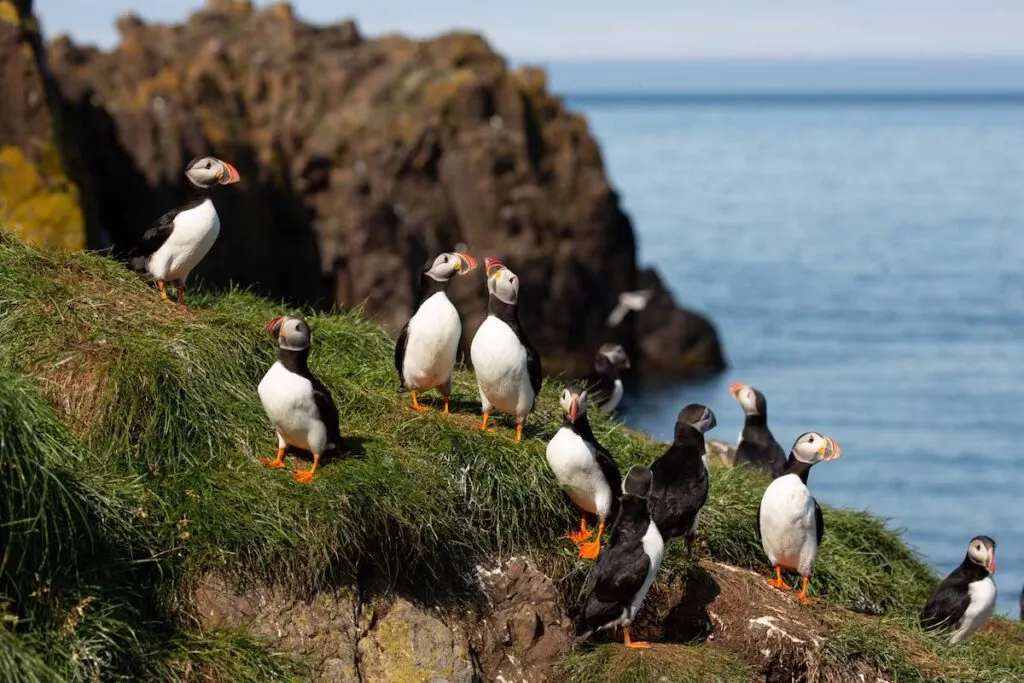
Did you know that Iceland is one of the main breeding grounds for the Atlantic puffin population? Around 60% of them head to Iceland each year in the summer months between May and late August, which makes this the best time of year to search for puffins in Iceland.
The main nesting sites include the Látrabjarg cliffs and Papey Island, but colonies of these adorable birds also live on a small island just a short sail from Reykjavik’s Old Harbour which is accessible on a puffin watching tour from Reykjavik.
A Puffin tour will give you the best chance of spotting them, and you’ll also see other marine birds, such as Arctic terns and black guillemots.
Keep a straight face at the Icelandic Phallological Museum
You might be surprised to learn that Reykjavik is home to a museum dedicated solely to penises. And, believe it or not, they’ve actually managed to do it tastefully.
The idea of a penis museum might be amusing, but the place itself is actually quite fascinating and a visit is probably one of the most unique things to do in Reykjavik. You’ll find everything from the giant 5ft long sperm whale penis that greets you as you walk in the door to an ‘elf penis’ in a jar.
This Reykjavik attraction is a unique experience you probably only need to visit once!
If you’re planning on visiting a few museums then the Reykjavik Card offers discounts.
Bathe in the waters of the Blue Lagoon
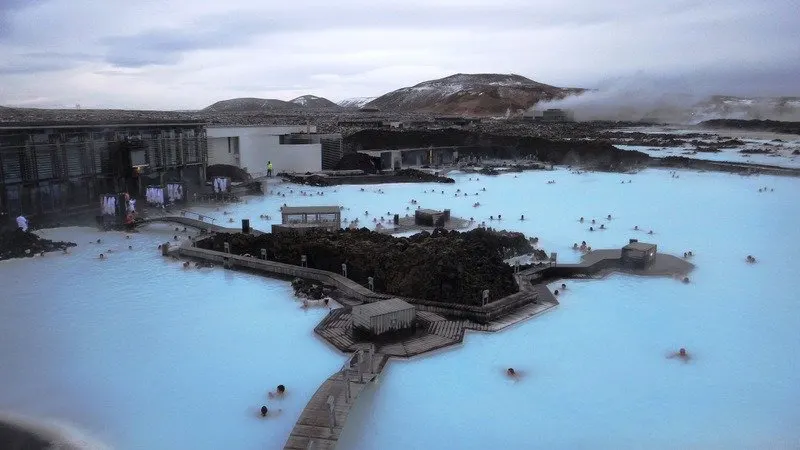
Take a dip in the milky blue geothermal waters and cover yourself in the soft silica mud for a skin treatment like no other.
Iceland’s famous Blue Lagoon lies outside of Reykjavik, but it’s reasonably close to the airport, so you can easily visit it on your way to or from the airport. You can even book airport transfers that include a couple of hours at the Blue Lagoon.
You’ll need to book your visit to the Blue Lagoon in advance to avoid disappointment. To help you plan your visit, click here to find out more about visiting the Blue Lagoon.
A new geothermal spa, the Sky Lagoon, located just a few minutes from Reykjavik opened in 2022. I haven’t been so I can’t comment but I will visit on my next trip to Reykjavik.
Seek out Reykjavik’s Street Art
Reykjavik’s vibrant street art scene dates back to at least the 1990s, but it’s really stepped up a gear in recent years.
You’ll find a colourful collection of murals called ‘Wall Poetry’ decorating walls and buildings around the Old Harbour. Each design is either inspired by a specific song or is a collaboration between the street artist and a musical artist.
Further works around the city include Guido van Helten’s imposing photo-realistic murals, so be sure to look up as you wander around and enjoy one of the best free things to do in Reykjavik.
>>> Book a city highlights tour with a local guide.
Try traditional Icelandic food on a food tour
Sampling traditional Icelandic food is one of the main attractions of a visit to Reykjavik, and a Reykjavik food tour is the best way to try some delicious dishes you might not have heard of before. There’s no better way to learn about a destination than through its food.
You’ll explore downtown Reykjavik with a knowledgeable local guide, who will take you to some of the city’s most famous restaurants and little-known family-run spots. Try the delicious Icelandic lamb soup that is served in nearly every home, local artisan cheeses, ice cream and the very potent drink ‘black death’.
Iceland brings some excellent food to the table, so make sure you turn up hungry for this Reykjavik food tour.
>>> Check rates and availability for the Reykjavik food tour
Go Whale Watching in Reykjavik
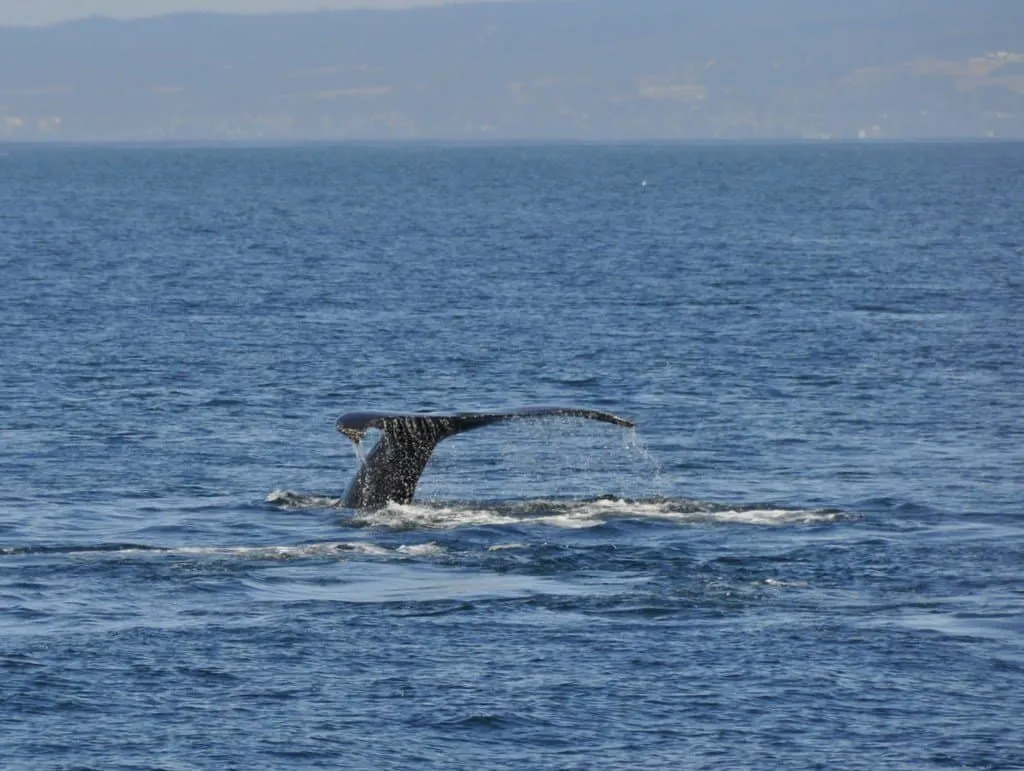
A whale-watching tour from Reykjavik is one of the most popular activities for visitors to Iceland, and tour companies run whale-watching day trips regularly from Reykjavik’s Old Harbour. Seeing these majestic creatures in the ocean waters that form their natural habitat is absolutely breathtaking.
You can spot whales all year round, but April to September is the best time to see whales in the waters around Iceland. Of course, there are no guarantees on this excursion, but you might see humpback whales, minke whales and dolphins, as well as other types of marine life.
A specially trained tour guide will accompany you, and they’ll share all sorts of fascinating facts about these animals as well as knowing the best places to spot them.
>>> Check rates and availability for Reykjavik whale watching tours
Explore downtown Reykjavik
Be sure to plan some time to explore downtown Reykjavik during your visit to the city. You’re unlikely to have seen any downtown scene quite like it!
Head to Laugavegur street, Reykjavik’s main shopping street, but you won’t find any typical souvenir shops here. Instead, it’s filled with cute boutiques selling traditional crafts and gift shops selling artisan jewellery and volcanic rock pottery.
There are plenty of fascinating museums to explore, coffee shops and a host of local eateries serving traditional Icelandic food. The waterfront walkway is the perfect spot for an afternoon stroll with the ocean breeze in your hair, and a popular place to watch the sun go down at the end of the day.
Discover Reykjavik’s history in Faxaflói Square
Reykjavik means smoky or steamy bay and the name probably relates to the steam coming from hot springs in the area. Round about 870 AD, Norwegian Ingólfur Arnarson, in true Viking tradition, cast his high seat pillars into the sea when he landed in Iceland and built his settlement where they ended up on the shore.
Two columns in Faxaflói Square trickle hot water which wafts steam into the air symbolising the founding of the city. Geothermal water is used to heat around 90% of Iceland’s dwellings; the hot water from the springs is cooled and pumped from boreholes straight into the taps of nearby homes.
Sample Reykjavik’s best hot dogs at Bæjarins Beztu Pylsur
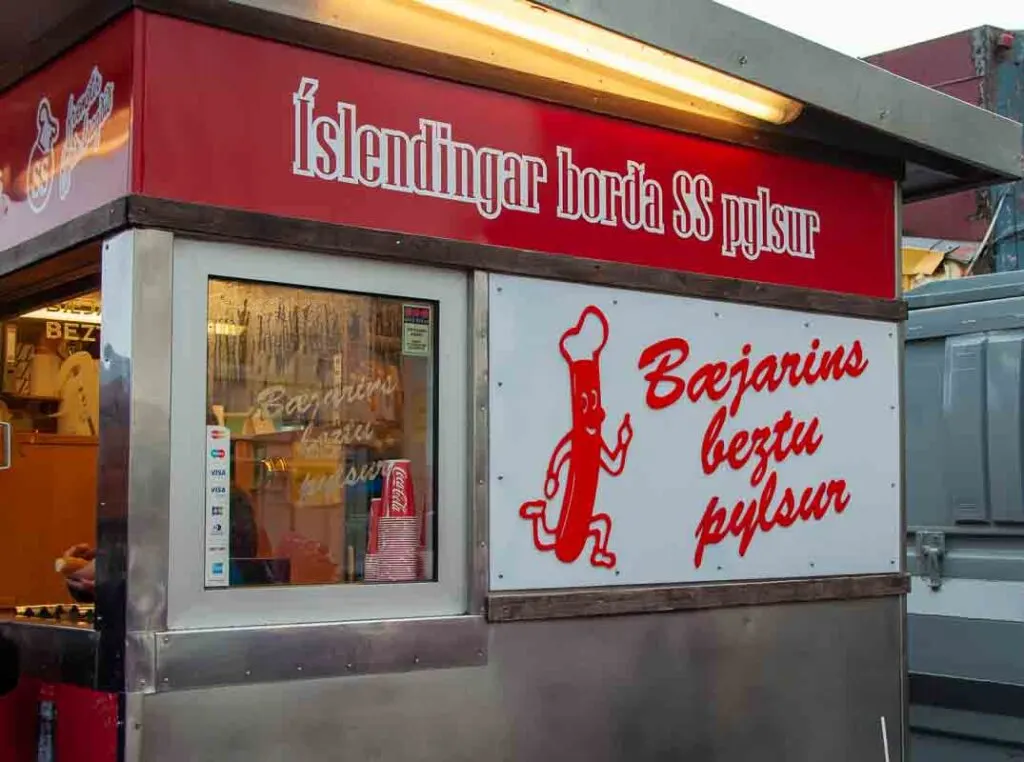

You simply can’t visit Reykjavik without trying their famous hot dogs. The best hot dog in Reykjavik is created by Bæjarins Beztu Pylsur and sold from the same downtown Reykjavik hot dog stand since 1937.
They’re made from a blend of lamb, pork and beef, which gives them a firmer texture and meatier flavour than your average dog. And the best way to eat one is ‘eina með öllu’, which means loaded up with everything from onions (both raw and crispy deep-fried), tomato ketchup, a sweet brown mustard called ‘pylsusinnep’ and a final flourish of remoulade.
It all adds up to a lot of flavour and a satisfying lunch on the go.
Check out the Old Harbour
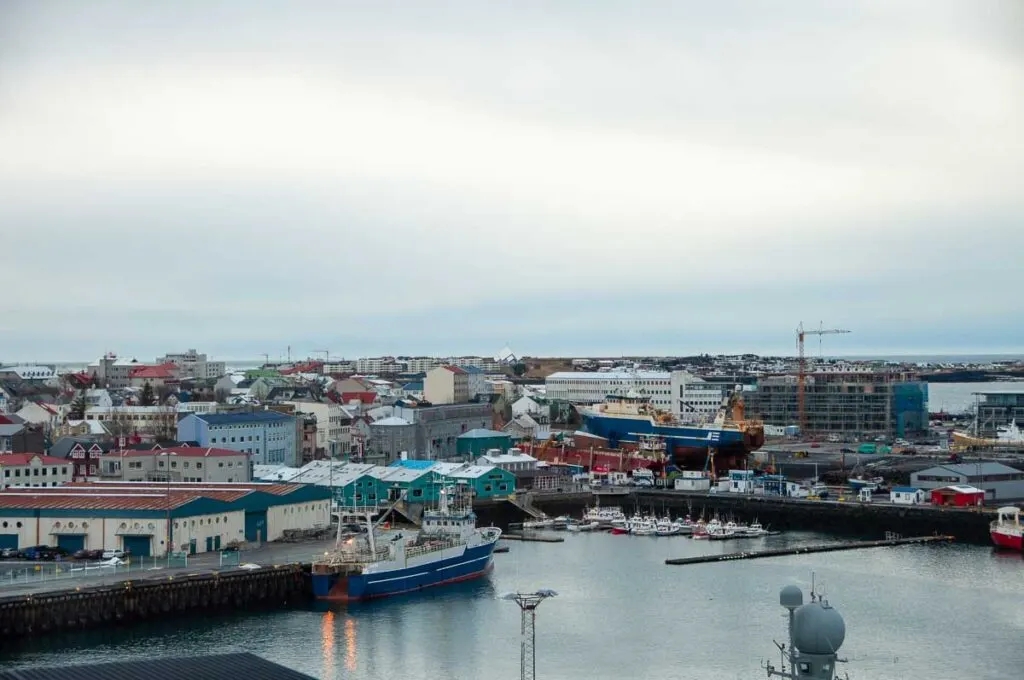
As well as being the departure point for whale-watching excursions and puffin spotting tours, the Old Harbour is a great place to visit in its own right, with stunning views over the bay and Mount Esja.
It’s the perfect place for a relaxing stroll past brightly coloured shops and eateries housed in repurposed fishing sheds. The blend of Scandinavian and European cultures imparts a vibrant energy and wandering around the Old Harbour will give you a real sense of Icelandic culture.
>>> Book a city highlights tour with a local guide.
Buy an Icelandic Souvenir
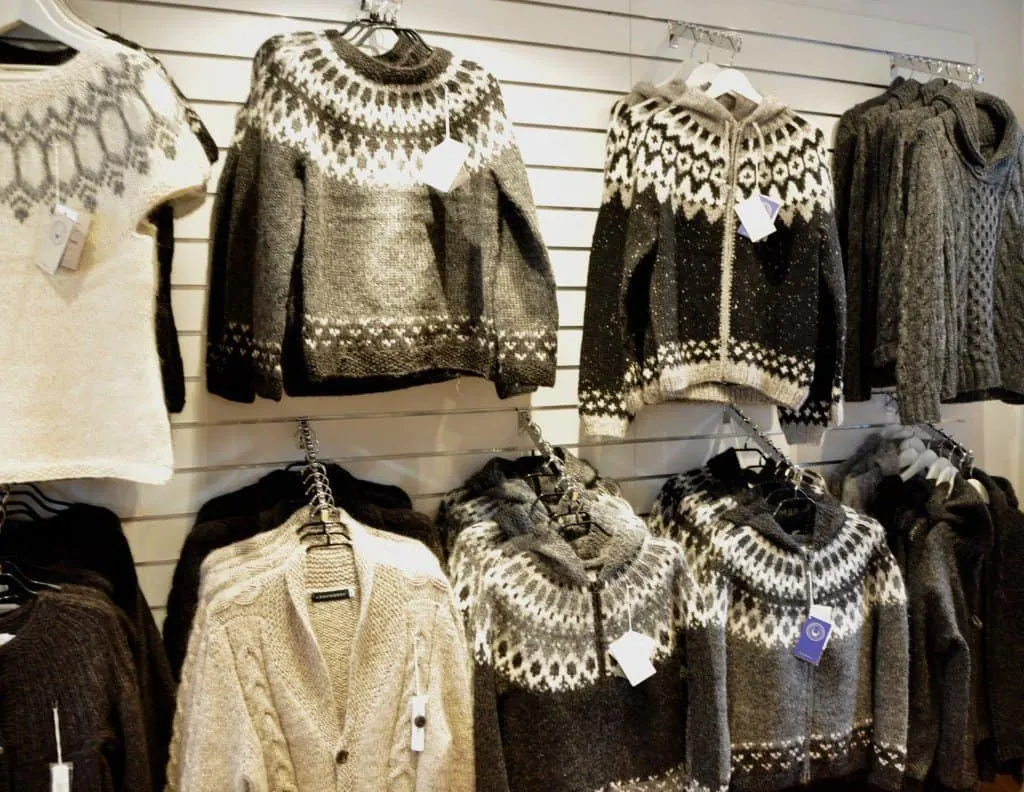
It’s always lovely to return from a trip with a unique souvenir, and a Lopapeysa jumper is an authentic piece of Icelandic culture to remind you of your time in Reykjavik.
If you ever wondered what Icelandic people do during those months of dark days and long winter nights then just drop by any craft shop. The famous lopapeysa (Icelandic jumper) is displayed in many of the shops along with hand-knitted hats and gloves with lovely Icelandic designs worked into them.
A hand-knitted Lopapeysa sweater will cost you around 25,000- 30,000 ISK, and you’ll find them available in shops and gift shops all over Reykjavik.
These traditional diamond-patterned sweaters are incredibly cosy, and you can wear one pretty much all year round in Iceland. But realistically, they’re too warm for everyday use in most climates, so you might prefer one of the lighter options that still feature the traditional pattern.
Talking of the weather in Reykjavik, it’s incredibly changeable. Check out my post What to pack for Iceland for some handy packing tips for both summer and winter.
If you enjoy exploring northern Europe you might like these posts…
Wonder at the Whales of Iceland
The harbour-side Grandi area of Reykjavik has many attractions worth visiting, and the Whales of Iceland Museum should feature on your Reykjavik itinerary. This museum is dedicated to the 23 species of whale living in the ocean waters surrounding Iceland, and is the largest whale museum in Europe.
The lighting and sound effects in the Whales of Iceland Museum create a very immersive atmosphere. You can marvel at life-sized models from dolphins and sperm whales up to the massive blue whale, the largest animal ever known to live on Earth.
These models are accompanied by digital information about each species, and you can even track individual whales’ movements in real-time through interactive displays.
Public Art in Reykjavik
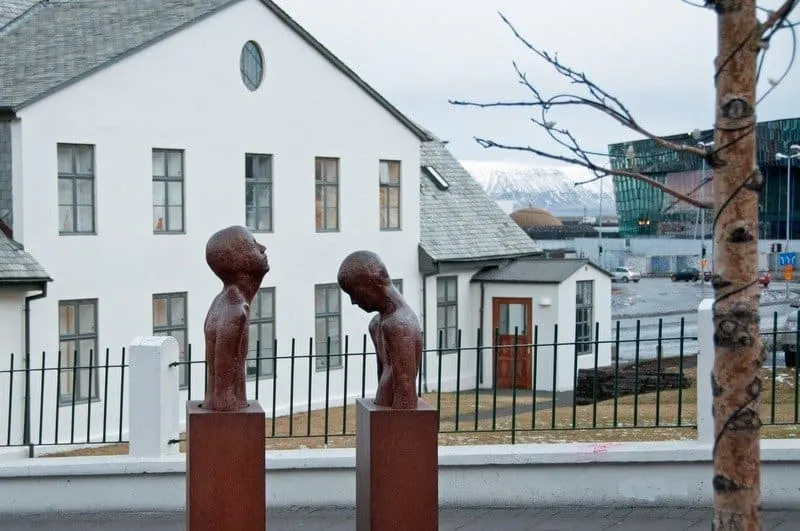
When you visit Reykjavik, you’ll soon discover public art is highly significant in Iceland’s capital city. There are sculptures dotted around the heart of the city, in the main streets, parks, squares and on public buildings. Most of them are created by Iceland’s art community, including Magnús Tómasson and Steinunn Thórarinsdótti, while others are the work of international artists like Yoko Ono.
Many of the public works of art can be found on a free walking tour of Reykjavik’s public sculptures, and the Reykjavik Art Museum also has an interactive map pinpointing dozens of works from its collection.
If you like art then a visit to the National Gallery of Iceland is also worth a visit. Especially if the weather turns, which at some point it will.
>>> Book a city highlights tour with a local guide.
Climb Thufa
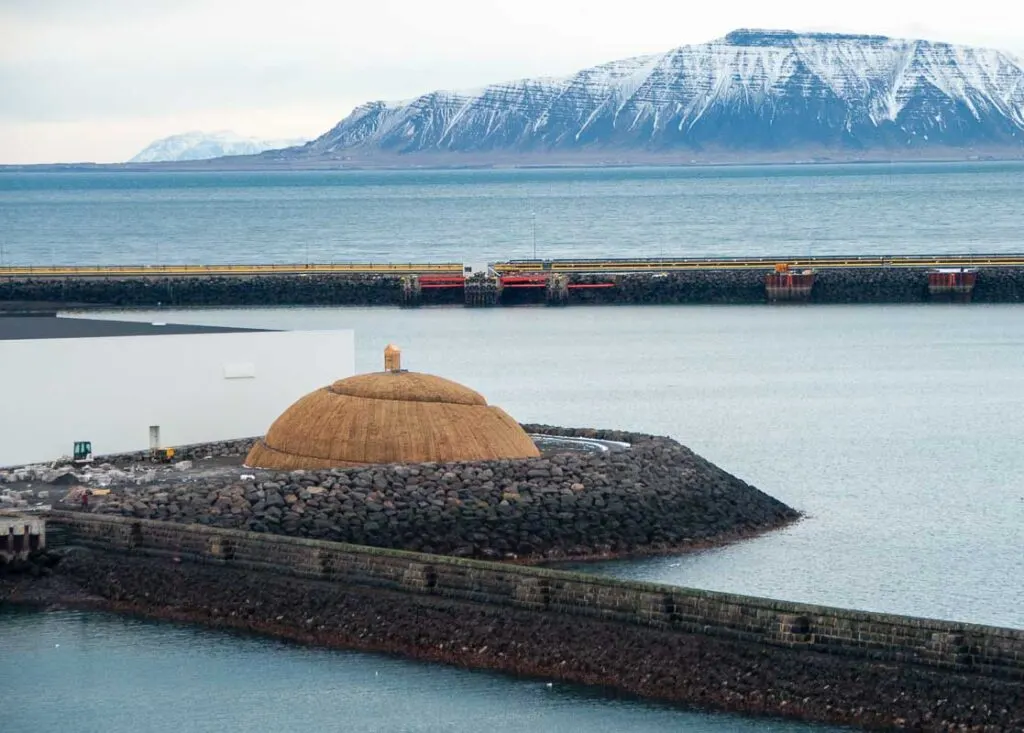
Thufa, or Þúfa as it’s known to locals, is a small hill with a pathway encircling it which leads to a small wooden hut on the top. The installation was completed in 2012 by Icelandic artist, Ólöf Nordal in a nod to the country’s history and culture and as a place for meditation and self-reflection.
The wooden shed on the top of the 8-metre hill is used for drying fish and if you peek inside you’ll likely. find some cod heads drying in the chilly Icelandic winds.
In summer the the grassy knoll is vibrant green and in winter the grass turns an ochre colour. Thufa is located near the old Harbour and Harpa in Reykjavik’s Grandi district and is possibly the most unusual of Reykjavik’s attractions.
Visit Perlan Museum and Viewpoint
The Perlan Museum of Icelandic Natural Wonders is a high-tech museum housed in a stunning building that highlights Iceland’s many natural wonders. You’ll find exhibits and information about the volcanoes, lava fields, hot springs and cliffs that make up the rugged landscape as well as the rich sea life that surrounds the island.
The museum’s centrepiece is the amazing Glaciers and Ice exhibition, where you’ll don cold weather gear and travel through a 100m-long ice cave kept at a chilly -10°C. The floor above houses an interactive display about Iceland’s glaciers, including a 360° of Iceland’s largest glacier, Vatnajökull.
The museum’s planetarium offers the next best thing to viewing the Northern Lights in real life, and the museum’s outdoor observation deck allows you to view mountains, volcanoes and a nearby glacier.
>>> Get good discounts on museum entry and city buses with the Reykjavik Card.
Visit the Saga Museum
Located in the Grandi area, next to the Maritime Museum, Reykjavik’s Saga Museum takes you back in time to see some of Iceland’s most famous figures brought ‘back to life’. The museum details over 1000 years of Icelandic history from the island’s settlement in the 9th century.
Each waxwork display features recreations of clothes, jewellery, furniture and tools that were produced using the original centuries-old techniques. Combined with the audioguide, the Saga Museum is an immersive experience that’s well worth a visit.
Read up on Reykjavik before your visit
Before I head for a new destination I like to set the scene by reading a book set in the place I’m going to visit. It’s great to see places come to life that I’ve read about and imagined. Check out these books set in Iceland to read before you visit, or even while you’re there!
Where to stay in Reykjavik
Icelandair Reykjavik Marina Hotel
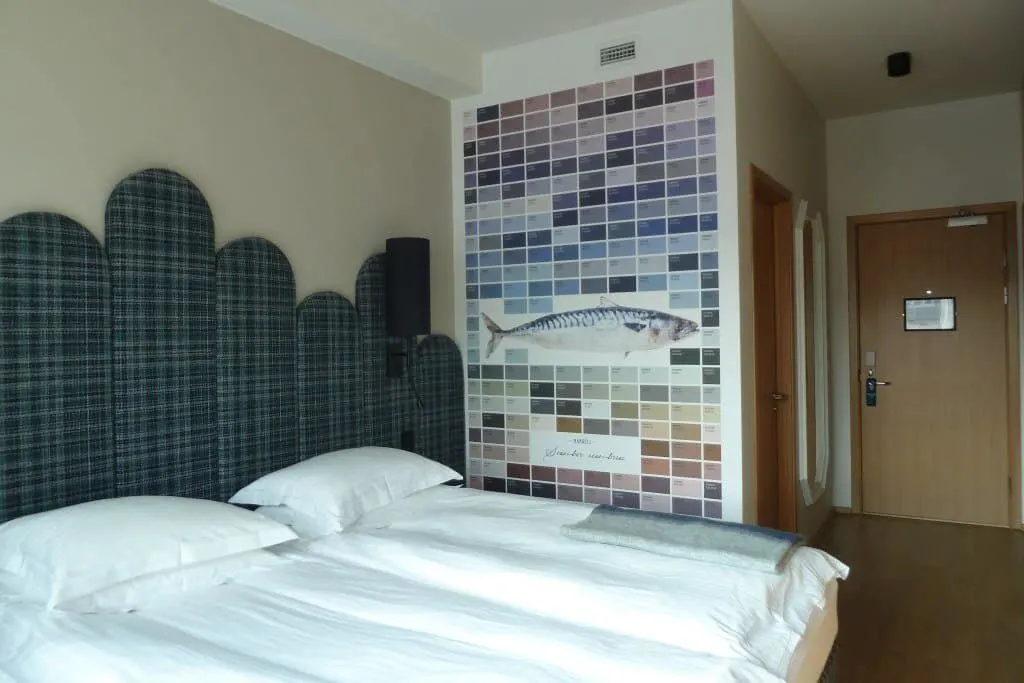
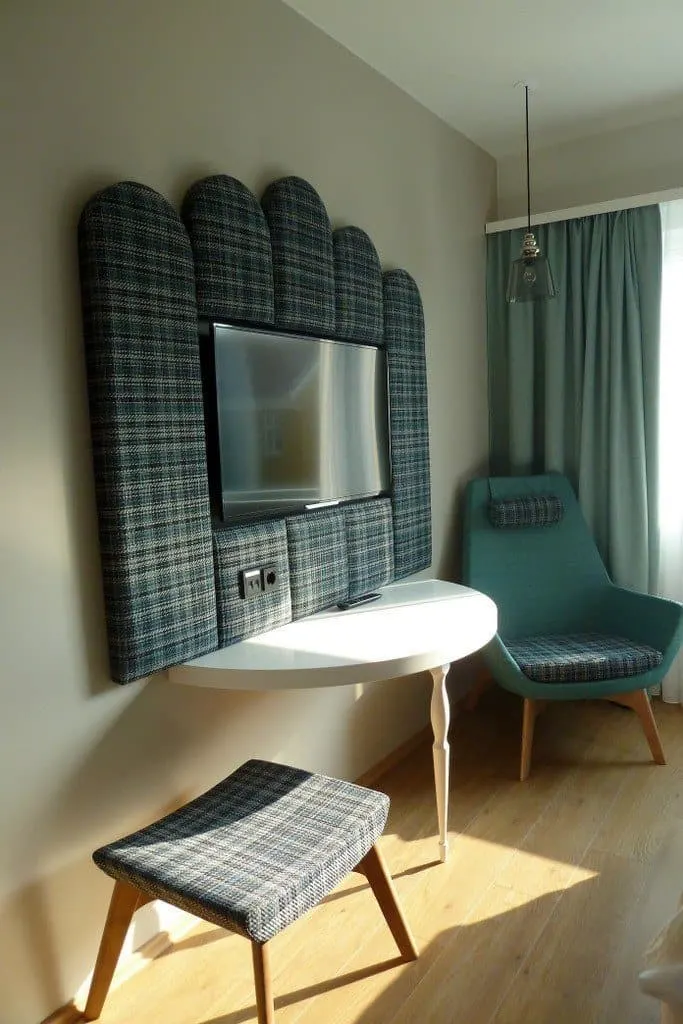
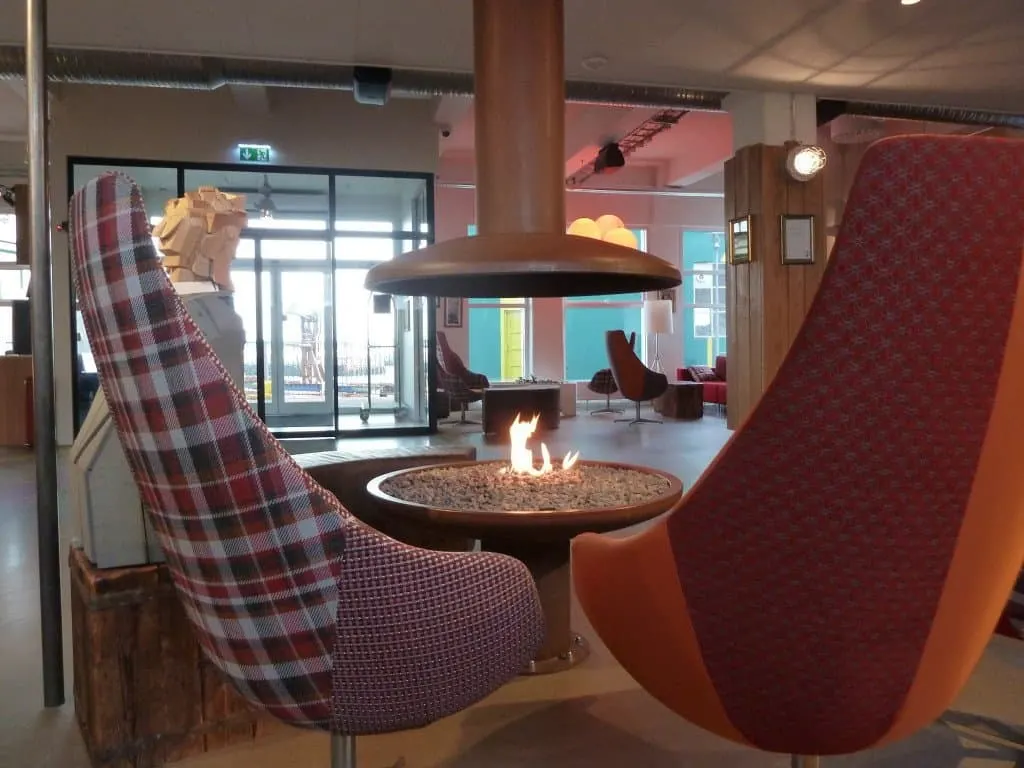
This fabulous Reykjavik design hotel is located next to the dry-dock and slipway in Reykjavik Harbour.
It’s bright, colourful and vibrant and is located in a converted paint factory. There are cool, quirky elements and nautical oddities reclaimed from the harbour area. It also has a fun bar area, restaurant and serves up a great breakfast.
I’ve stayed in Icelandair Reykjavik Marina Hotel twice and would definitely stay again. The rooms are light, airy and many of the design elements are locally sourced. As it’s only a ten-minute walk from Reykjavik city centre and a few minutes from Harpa. It’s perfectly located for exploring the city.
>>>Check rates and availability at Icelandair Reykjavik Marina Hotel
Reykjavik Travel Tips
Get good discounts on museum entry and city buses with the Reykjavik Card.
Getting from Keflavík Airport to Reykjavik by airport shuttle
The airport bus is a far cheaper option from Keflavík Airport to Reykjavík than by taxi and the bus can be booked in advance. Book your airport bus tickets.
Getting from Keflavik Airport to Reykjavik by Taxi
Taxis in Iceland are ridiculously expensive and I wouldn’t recomend it but if you’re decided on this route here’s the info.
Taxis running between Reykjavík and Keflavík charge by the meter although they sometimes offer a fixed price but it’s a lot. There is a taxi queue outside the arrivals hall but you could also book one in advance. The journey to Reykjavik is 30-miles and takes around 50 minutes.
Reykjavik, Iceland’s capital of cool
As you can see, Reykjavik, the capital city of iceland, has a diverse range of activities to offer visitors and is definitely worth adding to your Iceland itinerary. So, before you head off on a Golden Circle tour, take a day trip to the south coast or hit the ring road be sure to spend a day or two exploring Reykjavik, the cool capital of Iceland.
Are you ready to visit the capital of Iceland? The resources below will help with your travel planning.
- To get the best deals on flights, compare cheap prices with Skyscanner flight comparison site
- Book your airport transfers with Welcome Transfers
- Find the perfect place to stay on Booking.com
- Compare prices for your car hire
- Explore your destination through local experiences
- If you think you need a visa check with iVisa
- Plan your trip with maps and guide books
- I use a Wise account multi-currency debit card. Easy to top up, low fees and better exchange rates.
- And, finally, please don’t forget to protect you and your trip with travel insurance. I’m very happy with my Heymondo travel insurance.
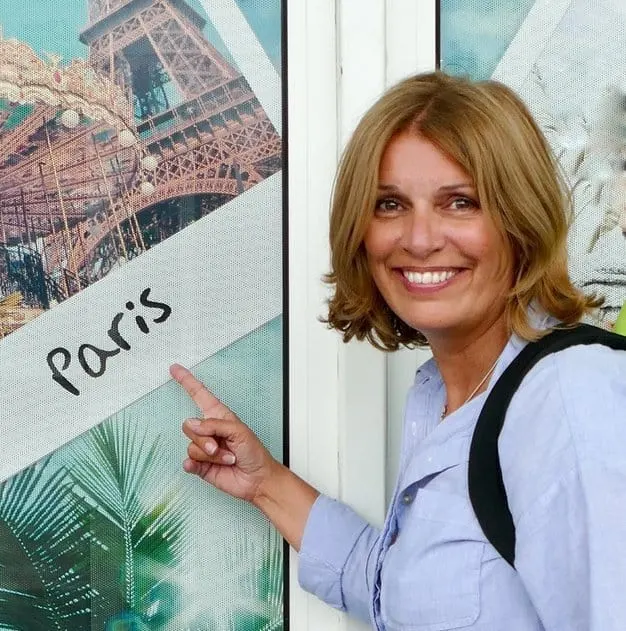
Suzanne Jones is a full-time travel blogger and writer at The Travelbunny website which she started in 2011 during her time as a professional travel planner. This serial traveller enjoys exploring new destinations, culinary encounters and the outdoors. When she’s not indulging her wanderlust or writing about her adventures you’ll most likely find Suzanne, camera in hand, enjoying coastal walks on England’s South Coast.
Suzanne also runs Hello Sussex a website which showcases the best of East & West Sussex. Read more about Suzanne here…

Johanna Bradley
Wednesday 1st of May 2019
It does look an incredible place, Suze. I hope you get unimpeded views of the Borealis next time :) :)
Suzanne Jones
Wednesday 1st of May 2019
That would be so amazing wouldn't it!
Christina
Thursday 25th of April 2019
I too, want to visit Iceland, but like you, others who have already been there want to return! What a funny museum to visit, but must be really interesting at the same time! Hopefully one day soon, I can pop over to Iceland on my way to Europe!
Suzanne Jones
Saturday 27th of April 2019
I hope you visit soon, it's one of my favourite countries! Iceland is absolutely beautiful and has a fair amount of quirk!